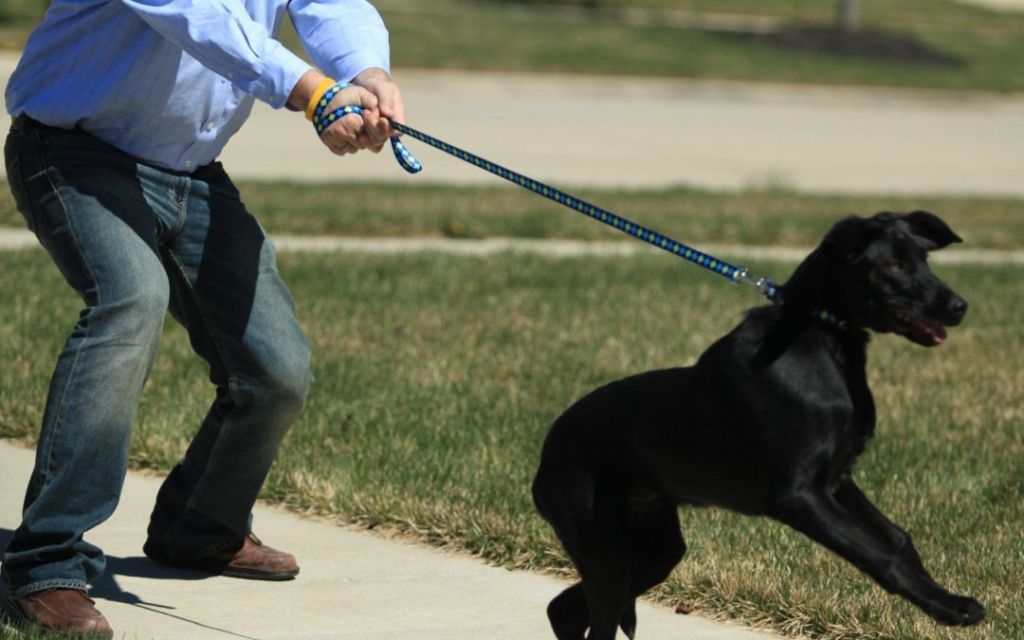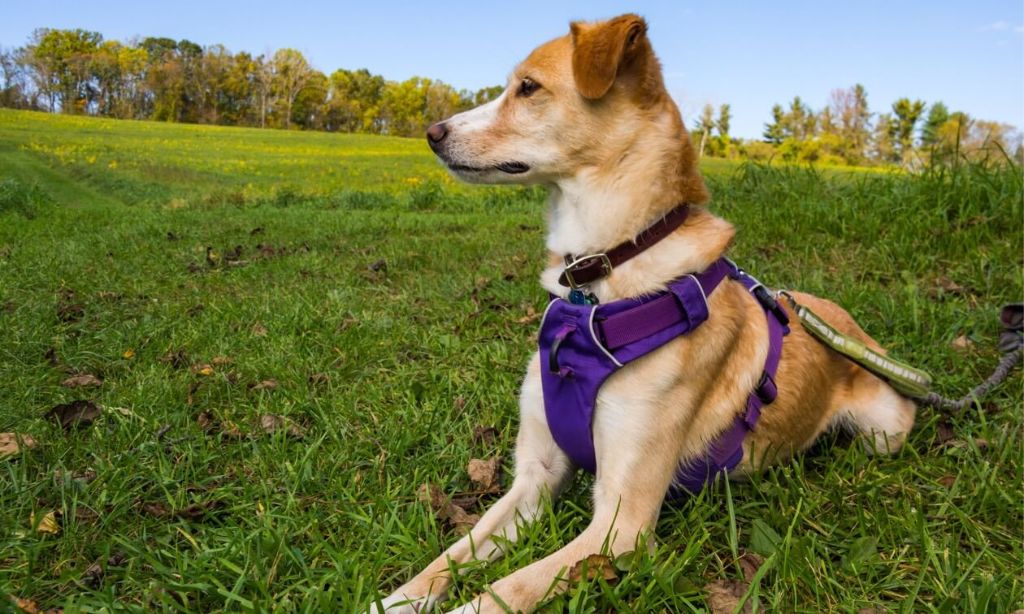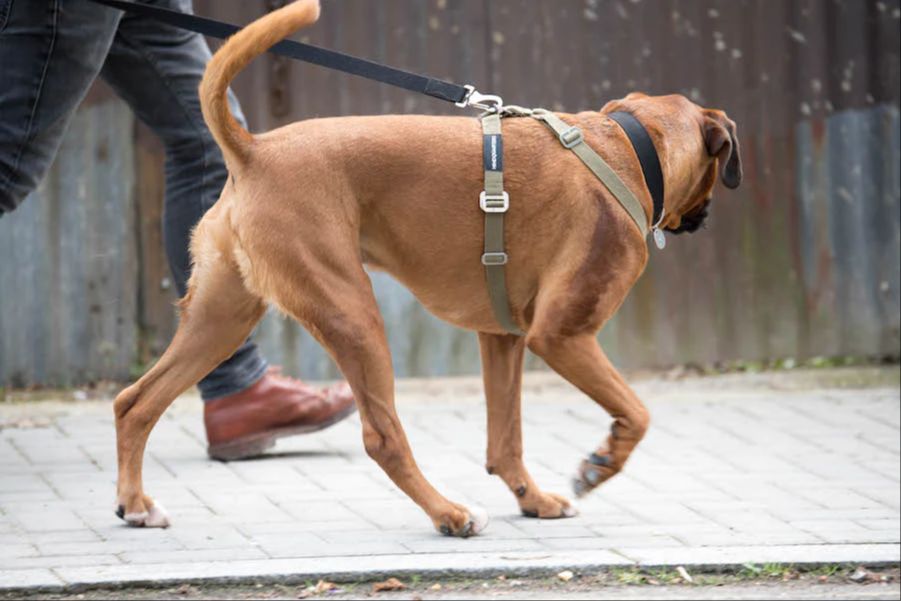Introduction
Dog harnesses have become a very popular walking and training tool for dog owners. Harnesses provide more control over pulling dogs while also reducing strain on the dog’s neck compared to traditional collars. This article will provide an overview of the pros and cons of using dog harnesses, the different types available, proper fitting and use, training with harnesses, choosing the right one for your dog, and alternative options. The goal is to give dog owners a comprehensive guide to help them decide if a harness is right for their dog and how to select and use one properly if they choose to go that route.
Pros of Harnesses
Harnesses are often recommended by dog trainers for dogs that tend to pull on leash. Unlike collars that put pressure on a dog’s neck when they pull, harnesses gently redirect a dog’s forward momentum to their chest and shoulders. This makes harnesses a much better option for dogs prone to pulling, as it reduces strain on their neck and trachea.
When dogs pull on a regular collar, the force is concentrated on their neck and throat area. This can cause injuries over time, like bruising or damage to the trachea. Harnesses help avoid this risk by dispersing the force across a larger surface area on the dog’s chest and shoulders. For heavy pullers or dogs with medical conditions, harnesses greatly minimize the chance of injury.

Harnesses are also useful for dogs that have naturally sensitive tracheas, like toy breeds or dogs with tracheal collapse. The gentle guidance of a harness keeps pressure off their airways. Dogs that cough or gag when pulling on a collar may show marked improvement with a harness.
In addition to protecting a dog’s neck, harnesses give handlers more control when walking a puller. The front attachment point steers and redirects the dog’s movement, which curbs pulling behaviors. With a collar, a dog can still pull forward; with a harness, they are gently turned back towards their handler.
For training dogs not to pull, harnesses are a safe equipment choice that still allows forward movement. They reduce injury risks while enabling dogs to walk comfortably, making them ideal for strong pullers and dogs in training.
Cons of Harnesses
While there are many benefits to using a harness for dogs, some dog trainers point out potential drawbacks as well. Two of the main cons often cited are that harnesses can encourage pulling and offer less control compared to other tools like collars.
Some dog trainers argue that because the leash attachment is on a dog’s back with a standard harness, it makes pulling ahead more comfortable and rewarding for the dog. Unlike a collar that puts pressure on a dog’s neck when they pull, most harnesses evenly distribute pressure across the chest and body. This distribution can enable dogs to put their full strength into pulling without much discomfort or correction.
Additionally, some trainers feel that harnesses offer less control over a dog than a properly fitted collar. With a collar, trainers have more ability to quickly correct and refocus a dog through leash pressure on their neck. Harnesses disperse pressure over a larger area, which may make quick corrections and communication less effective for some handlers.
However, these potential cons do not mean harnesses are unsuitable for training. When fitted and used properly under the guidance of an experienced trainer, many dogs respond well to harnesses. But it’s important to be aware of any potential disadvantages based on your dog’s unique needs and temperament.
Types of Harnesses

There are several different types of dog harnesses that serve different purposes in training and walking your dog. The main types are:
Front Clip Harness
A front clip harness attaches the leash to the front of the harness rather than the back. This gives you more control over pulling, as the harness redirects your dog back towards you if they try to pull forward on the leash. Front clip harnesses discourage pulling and are often recommended for strong pullers.
Back Clip Harness
A traditional back clip harness attaches the leash to a ring on the dog’s back, between their shoulders. These distribute pressure across the chest and shoulders. Back clip harnesses provide good control but do not discourage pulling as much as front clip versions.
Head Halter Harness
A head halter harness goes around the dog’s muzzle and neck, with the leash clipping under the chin. These give maximum control over the dog’s head and work similarly to a horse halter. However, head halter harnesses require training for the dog to get used to wearing them.
Fitting a Harness
Properly fitting a harness is crucial for both your dog’s comfort and for achieving desired training results. When fitting a harness, you’ll first want to measure your dog to determine the correct size. Measure around their chest behind their front legs, and refer to the sizing chart for the specific harness brand and model. It’s important to get an accurate chest measurement, as a harness that is too loose can allow your dog to slip out, while one that is too tight will be uncomfortable.
Make sure to try on the harness and check the fit before use. You should be able to fit two fingers comfortably between the harness straps and your dog’s body – any more slack could allow them to back out of the harness. Adjust the various straps as needed to get a secure but comfortable fit. Test the fit by gently lifting on the leash and seeing if the harness tightens snugly when under pressure. Also check that nothing is rubbing or chafing. Take the time to get the ideal fit dialed in.
It’s a good idea to recheck the fit regularly as your dog’s shape may change over time. Make sure to keep them comfortable by adjusting harness fit accordingly. A properly fitted harness promotes better leash control, avoids injuries, and ensures your dog remains securely contained.
Using a Harness
Walking a dog properly while using a harness is important for both the dog’s safety and training. Here are some tips for walking a dog with a harness:
Hold the leash close to your body with a short leash length. Keeping the leash short prevents tangling and gives you more control. Allow extra slack on straight stretches but avoid letting the leash drag on the ground.
Start and stop walking intermittently. Starting and stopping will reinforce paying attention to you. Reward with treats when your dog walks attentively by your side without pulling.
Change directions frequently using verbal cues like “this way.” Your dog should learn to pay attention to stay in sync during turns and direction changes.
Don’t allow pulling. Pulling puts pressure on the dog’s neck and body. If your dog starts pulling, stop immediately until the leash has slack again. Then reward the loose leash behavior before continuing your walk.
Use two hands for additional control. For larger or highly excitable dogs, holding the leash with two hands can provide more strength and stability.
Consider a double clip/back clip harness for dogs prone to pulling. This attaches the leash to the dog’s back instead of the chest which can discourage pulling.
Training With a Harness
Using a harness for leash training requires some adjustments from conventional collar training. Here are some best practices:

Get your dog used to wearing the harness. Let them wear it around the house and during playtime before trying to walk them in it. This allows them to get comfortable.
Use positive reinforcement. Reward your dog with treats and praise when they walk properly on leash instead of relying on corrections.
Work on loose leash walking. Stop or change directions when your dog pulls on the leash, then continue when the leash is loose again. This teaches them not to pull.
Avoid letting your dog get ahead. If they forge in front, gently bring them back to your side with a treat lure until they learn to stay with you.
Practice turns and commands. Work on cueing your dog for turns and stops so they learn to follow your lead rather than control the walk.
Be patient and consistent. Leash training takes time and daily practice. Keep sessions positive and gradually increase distractions.
With consistency and positive methods, a harness can help reinforce better leash manners. Refrain from harsh corrections and your dog will progress well.
Choosing a Harness
When choosing a harness for your dog, there are several factors to consider based on your dog’s unique needs and lifestyle:

- Breed size and shape. Make sure to pick a harness designed for your dog’s breed and body type. The harness should properly fit your dog’s chest, neck, and body without restricting movement.
- Purpose. If you need a harness for walking, running, training, or car travel, opt for a harness designed and fitted for that specific activity.
- Materials. Look for durable, comfortable materials like nylon, cotton, or padded mesh that won’t irritate your dog’s skin.
- Adjustability. Pick a harness with multiple points of adjustability so you can customize the fit as your dog grows and their shape changes.
- Special needs. If your dog is aging, has joint issues, or is a puller/escape artist, choose a harness that provides adequate support, control, and security.
- Personality and tolerance. Make sure to select a harness style your individual dog will be comfortable wearing based on their unique personality and tolerance for restraint.
Taking the time to find the right harness for your dog’s needs, shape, and temperament will provide safety, security and comfort during walks, trips, and training.
Alternative Options
While harnesses are popular for dog training and walking, there are other options that dog owners may want to consider as well:
Collars
Traditional collars that fasten around the neck are another common option. Collars give owners more direct control over guiding the dog’s head. There are several collar styles to choose from:
- Flat collars are basic and adjustable.
- Martingale collars tighten slightly when pulled to avoid slipping off.
- Prong or pinch collars have metal links that constrict when pulled.
- Slip collars slide and tighten on the neck when leash is pulled.
Collars should fit snugly but not too tight. It’s important to monitor for any signs of choking or throat irritation.
Head Halters
Head halter devices fit around a dog’s snout and neck to allow more control over the head with gentle guidance. The straps apply pressure behind the ears and around the muzzle when pulled. This can deter pulling without straining the neck. Proper fitting and conditioning is essential for head halter success and acceptance.
While collars and head halters provide alternate options, many trainers and vets emphasize more rewards-based techniques over equipment that relies on physical control and correction.
Conclusion
In summary, dog harnesses can be a very useful tool for many dog owners when used properly. The main benefits of harnesses are that they help reduce pulling, minimize injury risk, and give the owner more control. However, harnesses must be fitted and used correctly to avoid issues like escape or chafing. When deciding if a harness is right for your dog, consider their size, age, breed, and temperament. Work with a qualified trainer to ensure you are using the right type of harness and proper training techniques for your individual dog. While harnesses are not necessarily recommended for all dogs or all situations, they can be an excellent alternative to collars when used appropriately.
The key recommendations around harnesses are:
- Consult your vet if you have questions about using a harness for your dog’s needs
- Work with a certified trainer to ensure proper fit and use if new to harnesses
- Choose a high-quality harness designed to avoid escapes and chafing
- Introduce your dog slowly and use positive reinforcement
- Do not leave a harness on an unsupervised dog
- Monitor for signs of chafing and adjust fit accordingly
- Use a double-ended leash designed for harnesses to maintain control
With proper selection, fitting, training and use, harnesses can be a safe and effective walking aid for many dogs. Consider your individual dog’s needs and work with experts to determine if a harness is the right option.
